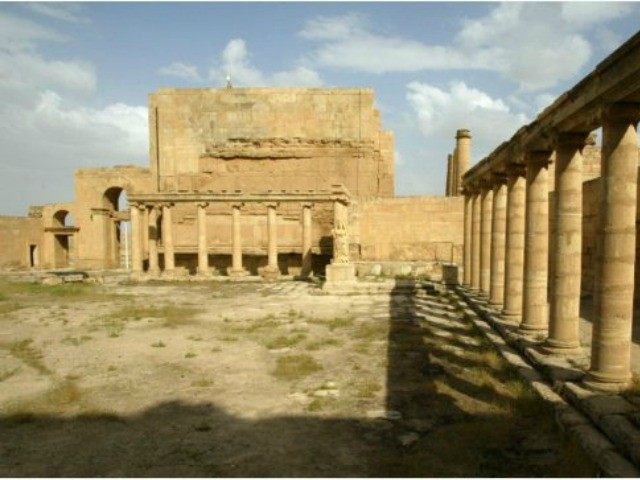The Islamic State (ISIS/ISIL) reportedly destroyed Khorsabad, nine miles from Mosul, the third city over the weekend. Residents alerted Iraqi officials on Sunday about possible looting.
Iraq’s tourism and antiquities minister Adel Shirshab said “there are concerns” the jihadists will loot and destroy the 2,700 year old city. Witnesses told Kurdish official Saeed Mamuzini the militants already destroyed the site.
Shirshab’s ministry lashed out at the international community for not doing enough to help Iraq protect its heritage.
“Our airspace is not in our hands,” he said. “It’s in their hands. I am calling on the international community and coalition to activate its air strikes and target terrorism wherever it exists.”
He also reached out to the United Nations Security Council for an emergency meeting. Hatra and Nimrud, two cities also destroyed, are UNESCO World Heritage Sites.
“The world should bear the responsibility and put an end to the atrocities of the militants, otherwise I think the terrorist groups will continue with their violent acts,” he continued.
Khorsabad became an Assyrian capital after King Sargon II built it in 721 BC. It is known for the high wall Sargon built around the city. Parts of the wall and city currently reside in Baghdad, Paris, London, and Chicago.
According to UNESCO, the Seleucid Empire built Hatra in the 3rd or 2nd century BC. The Parthian Empire captured the city in the 1st century BC, which allowed the city to prosper and become the capital of the first Arab kingdom. It survived invasions by the Romans in 116 and 198 AD due to “its high, thick walls reinforced by towers.” The city was used in the opening scene of The Exorcist.
On Friday, residents reported an attack on the Assyrian city of Nimrud. Assyrian King Shalmaneser I built Nimrud in the 13th century BC. King Ashurnasirpal II made it the capital of Assyria in the 11th century BC.
The Islamic State destroyed Jonah’s tomb in Mosul when they captured the city last June. They demolished all Christian institutions in the city. A video surfaced in February of militants destroying thousand years-old artifacts in a Mosul museum. The terrorists also targeted libraries and universities where they burned all non-Islamic books.
The priceless antiques are not worthless for the radical Islamic group. The sale of antiques to collectors, including Westerners, turned the Islamic State into billionaires. The Wall Street Journal reported on the Syrian “Monuments Men,” who work to preserve the precious history. A cleric and American priest worked before and after the invasion of Mosul to preserve manuscripts. But each video that surfaces is another punch in the face to historians.

COMMENTS
Please let us know if you're having issues with commenting.